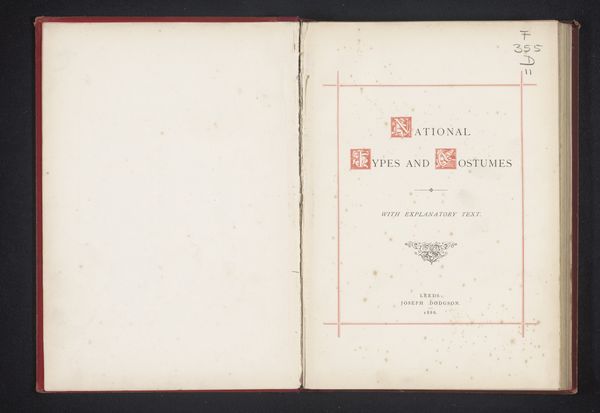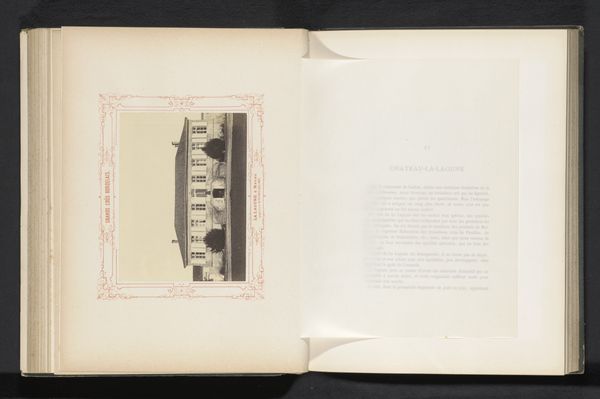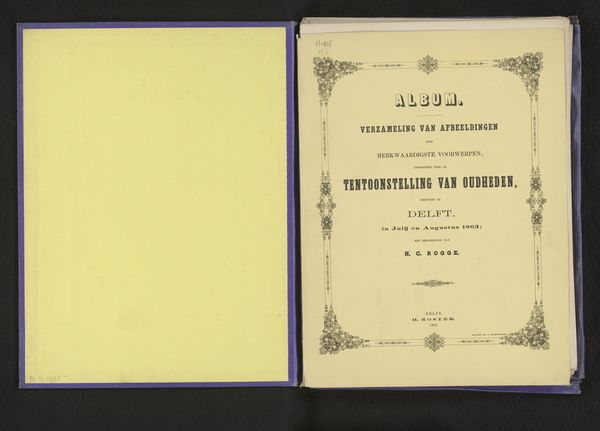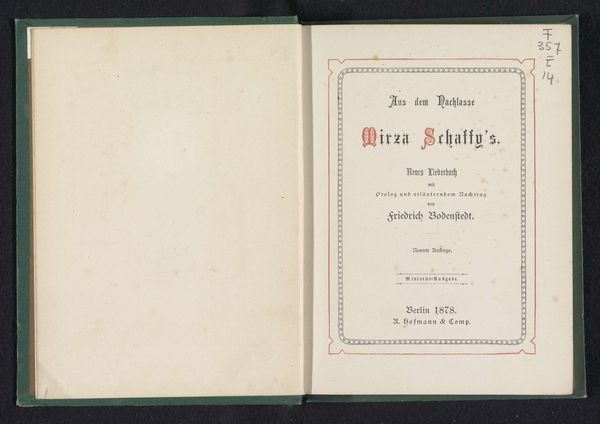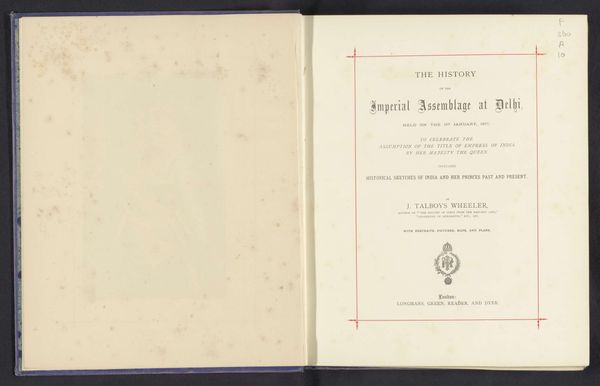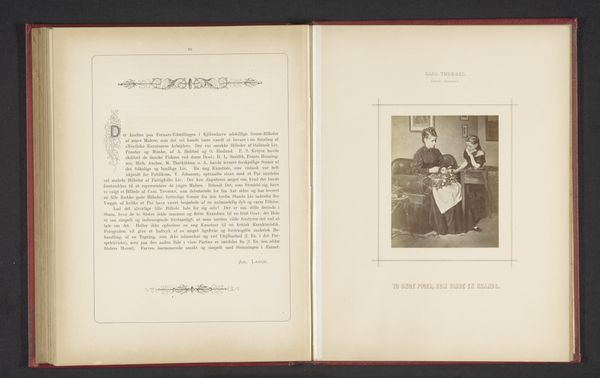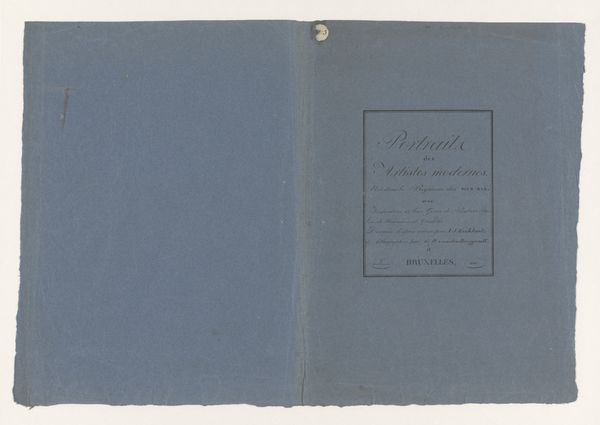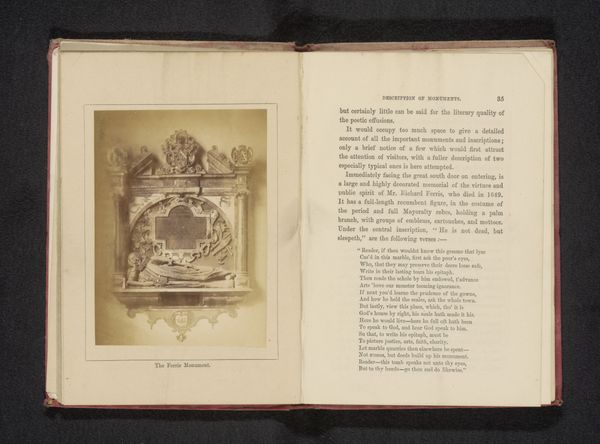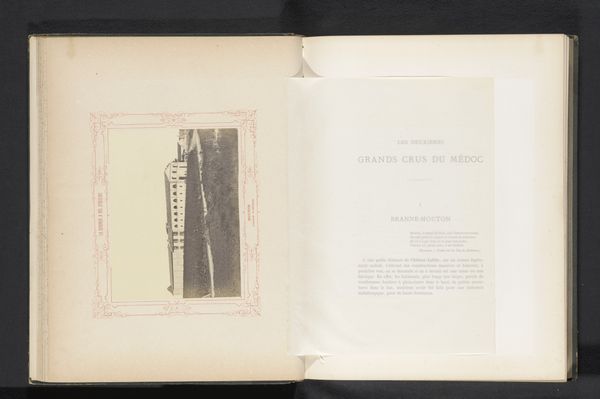
print, typography
# print
#
typography
#
decorative-art
Dimensions: height 295 mm, width 200 mm, thickness 25 mm
Copyright: Rijks Museum: Open Domain
This is Karl Bormann's "Rafael's Bibel genannt die Loggien," a book of graphic art. The materials used are paper, board, and metal, all transformed by printing and binding. The book’s visual impact largely comes from the surface treatment of the paper. Notice the endpapers, swirled with a distinctive marbled pattern – an effect created through meticulous manipulation of pigments on a liquid surface, a skilled craft tradition. This is offset by the metal clasps. These components weren't assembled by Bormann himself. The labor of papermakers, printers, and bookbinders is embedded here, all working within a larger system of publishing, distribution, and consumption. The book is clearly intended as a luxury item. Considering these aspects – the high degree of skill involved, the industrial processes utilized, and the culture of craft practice surrounding its production – we gain insight into the full meaning of this artwork, beyond its function as simply a book.
Comments
No comments
Be the first to comment and join the conversation on the ultimate creative platform.
